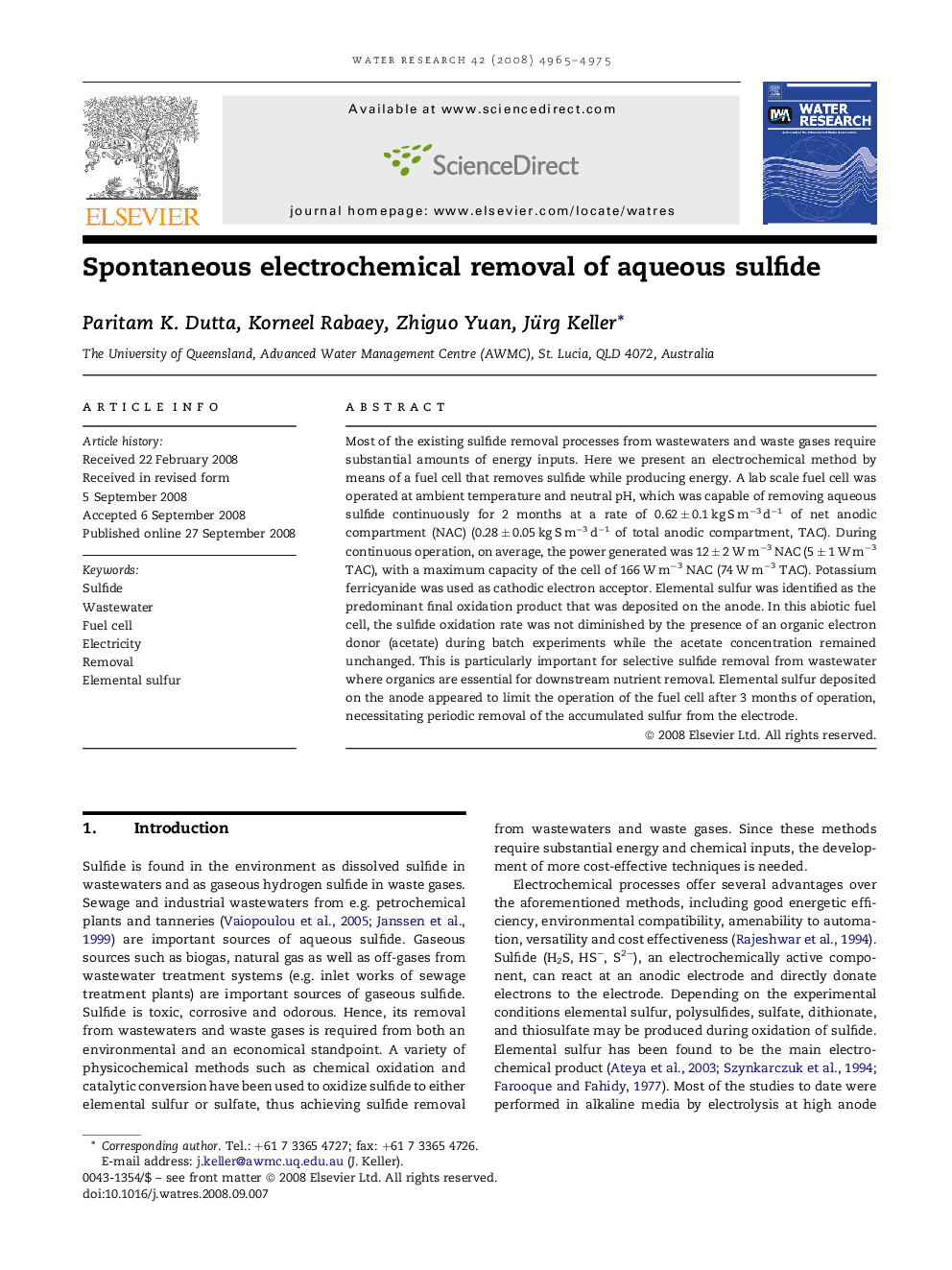| Article ID | Journal | Published Year | Pages | File Type |
|---|---|---|---|---|
| 4484627 | Water Research | 2008 | 11 Pages |
Most of the existing sulfide removal processes from wastewaters and waste gases require substantial amounts of energy inputs. Here we present an electrochemical method by means of a fuel cell that removes sulfide while producing energy. A lab scale fuel cell was operated at ambient temperature and neutral pH, which was capable of removing aqueous sulfide continuously for 2 months at a rate of 0.62 ± 0.1 kg S m−3 d−1 of net anodic compartment (NAC) (0.28 ± 0.05 kg S m−3 d−1 of total anodic compartment, TAC). During continuous operation, on average, the power generated was 12 ± 2 W m−3 NAC (5 ± 1 W m−3 TAC), with a maximum capacity of the cell of 166 W m−3 NAC (74 W m−3 TAC). Potassium ferricyanide was used as cathodic electron acceptor. Elemental sulfur was identified as the predominant final oxidation product that was deposited on the anode. In this abiotic fuel cell, the sulfide oxidation rate was not diminished by the presence of an organic electron donor (acetate) during batch experiments while the acetate concentration remained unchanged. This is particularly important for selective sulfide removal from wastewater where organics are essential for downstream nutrient removal. Elemental sulfur deposited on the anode appeared to limit the operation of the fuel cell after 3 months of operation, necessitating periodic removal of the accumulated sulfur from the electrode.
